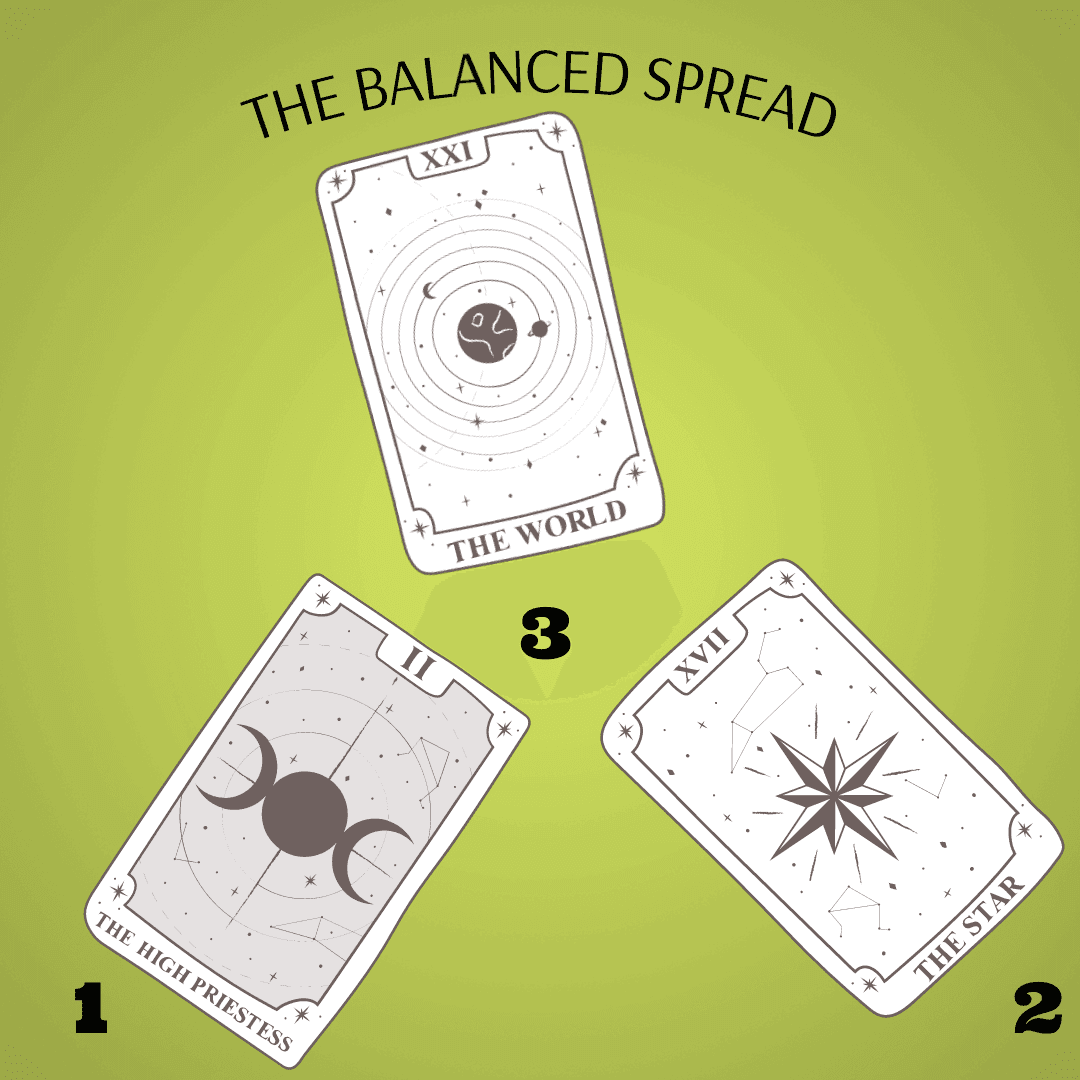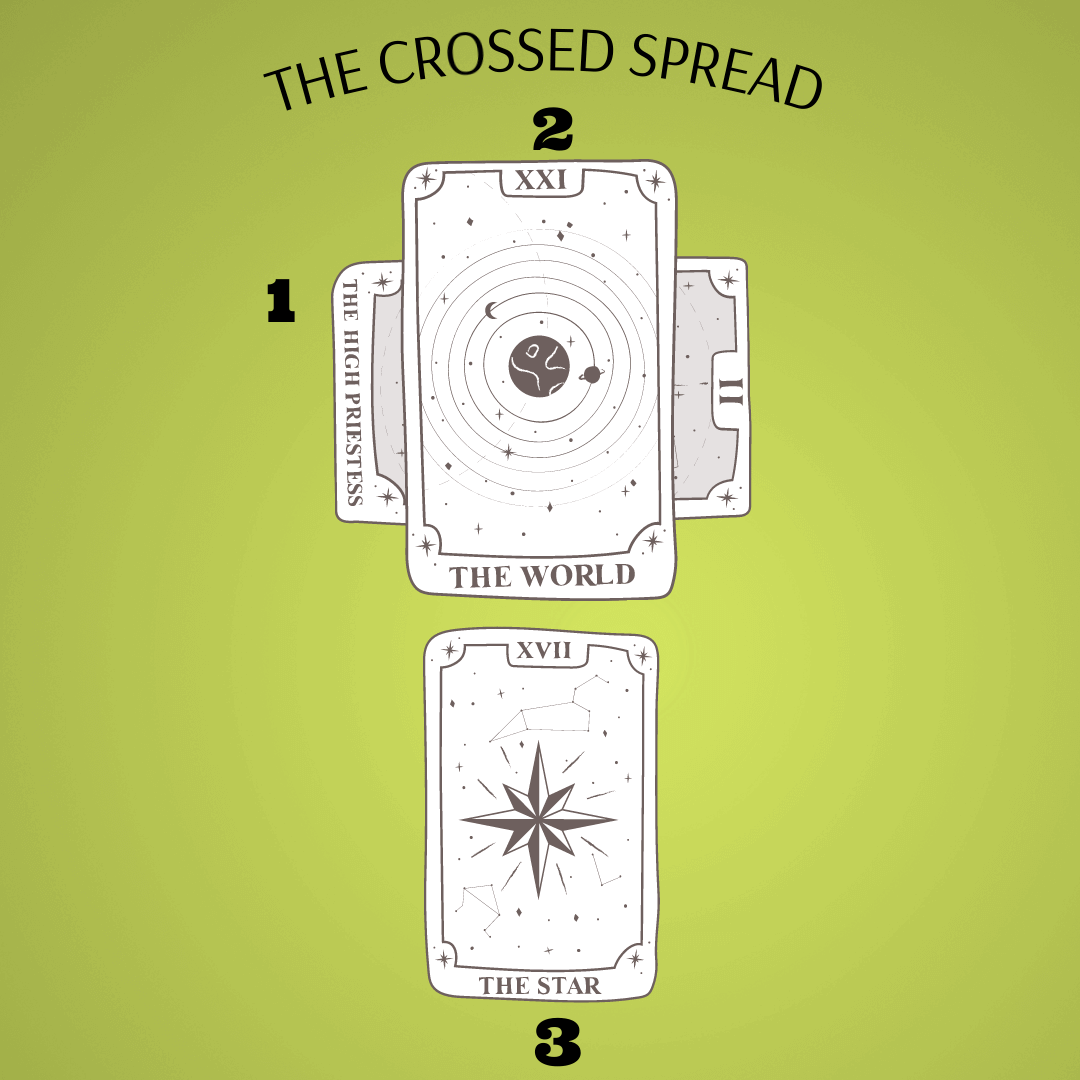Updated:
Different tarot layouts or combinations can give us various insights or perspectives for our questions about anything and everything in life. There are multiple tarot reading layouts that can be used in different tarot readings, depending on your unique circumstances.
However, a basic three-card and five-card tarot spread can still give you enough information for the answers you seek or the story you wish to construct.
In fact, starting with a three-card tarot reading layout will help you understand the much more complex options. So, let’s explore the three tarot card layout variations you can create.
Tarot Card Reading Layout #1—The Linear Spread

You can create a series of events with the three-card Linear Spread. This means you can develop scenarios in your head that will give you insight into what might happen in the future.
To organize a three-card spread linearly, you could, for example, think about yourself and the person you’re interested in, then ask the cards whether or not you’ll build a relationship with them in the future.
The Linear Spread is ideal for those new to layouts for tarot cards or anyone seeking straightforward answers. It’s a concise way to gain clarity on the sequence of events and understand the progression from the past through the present and into the future.
When setting up your three cards, think of them as a timeline where the first card represents the past, influencing the current situation depicted by the second card, which then impacts the outcome shown by the third card.
This spread can help you see the trajectory of your actions and their potential results, making it a practical tool for decision-making, for example, when doing a mental health tarot reading. Whether you’re pondering over a new job, a move, or a relationship, The Linear Spread is a powerful way to align your thoughts with your intentions and likely outcomes.
Tarot Card Layout #2—The Foundational Spread

Alternatively, you can create the three-card Foundational Spread with three scenarios in which the first two scenarios will depict two situations, and the third scenario will be a conclusion of whether you agree with scenario #1 or scenario #2.
Think of it like this: someone told you brown sugar is healthier (scenario #1) than white sugar (scenario #2). Your judgment as to what you agree with will be the conclusion (scenario #3).
The Foundational Spread presents a comparative analysis, with the first two cards representing differing viewpoints and the third card culminating in your stance.
It’s a form of decision-making assistance where you get to weigh two alternatives before drawing your own conclusion, much like determining the better choice between brown and white sugar.
#3 The Balanced Spread

A tricycle with only two wheels would lose its balance and not work properly. Similarly, the three-card Balanced Spread would not be complete without one of its cards. This means that the three cards rely on each other, and without one of them, the structure would collapse.
The Balanced Spread ensures a complete spectrum analysis of any situation. It’s one of those tarot card reading layouts designed to provide insight into three key areas: the root cause, the current state, and the potential outcome.
Each position has a unique contribution, creating a narrative that guides you towards equilibrium in decision-making or understanding a circumstance. Without all three, the picture remains unclear, and the guidance offered is incomplete.
#4 The Finance Spread

To solve your financial issues, you can create the three-card Finance Spread using the following order:
- Which finance-related issues am I facing?
- Do I possess any finance-related skills that will help me generate a solid source of income?
- Are there any opportunities out there that will help me generate money in abundance?
This three-card spread is a great combination that will help you find a solution to your financial problems.
The Finance Spread is designed to address economic concerns through a structured three-card inquiry, pinpointing problems, assessing skills for income potential, and identifying opportunities for wealth.
This targeted approach helps clarify financial paths and actionable steps towards monetary stability and growth.
Tarot Love Spread Layout #5—The Crossed Spread

You can overcome obstacles using this three-card spread; while it’s often used for love-related conundrums (hence the name), The Crossed Spread can actually be helpful in any complicated situation.
It refers to a three-step process in which you face a challenge, think of ways to help you overcome it, and finally eradicate it. For instance, you need to study for an exam; you’ll gather the relevant material for learning and eventually ace your test.
The Crossed Spread is a versatile tool, not just for unraveling romantic dilemmas but for tackling any complex problem. It’s a practical approach: identify the hurdle, strategize a solution, and then take action to resolve it.
It’s like creating a game plan that guides you from acknowledging an issue to successfully resolving it.
Final Takeaway
Now you know the most basic and universally used tarot card spread layouts. But those are just the tip of the iceberg.
If you start exploring further, you’ll soon find out that tarot card spreads are not only limited to three or five-card spreads. You can construct layouts that are based on 10, 12, and even 20 cards.
Using a bigger layout requires a little patience and practice, which is why starting with a three-card or five-card spread is a great way to improve your tarot reading skills.



